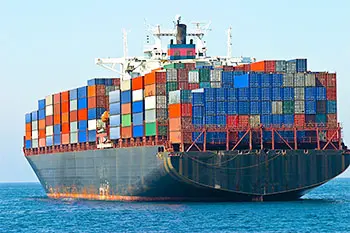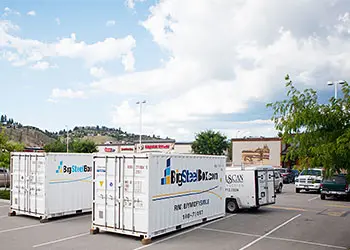
An employee using a tablet to monitor their supply chain in a warehouse.
How To Build Resilience into Your Supply Chain as a Small Business
With the increase in world trade from 37% in 1970 to 50% in 2014, along with the rise of global suppliers, small businesses must be aware of the risks associated with relying on a small number of suppliers. Disrupting just one supply line might cause your business to lose revenue and customers.
The COVID-19 pandemic furnished an excellent example of supply chain disruption. During the pandemic, the inventory-to-sales ratio was at an all-time low, as businesses struggled to put enough product on the shelves to meet demand — and this came right on the heels of sudden, significant increases in this ratio as consumers decreased their spending. If you ran a small business and didn’t have many inventory suppliers at that time, you were faced with the very real possibility of suspending operations or even calling it quits altogether.
Building resilience in the supply chain involves planning for potential disruptions, such as sourcing alternative suppliers, adopting innovative technologies, and developing effective communication strategies with customers. Additionally, companies should ensure that they have adequate resources and personnel in place to respond quickly to any disruptions.
With these measures in place, businesses can ensure that their supply chain remains robust, flexible, and efficient during times of crisis or unexpected change.
Understand Your Supply Chain
To build resilience in the supply chain, it’s crucial to have a thorough understanding of all the links in your supply chain and their dependencies. Analyzing each link, from suppliers to distributors and customers, can help you identify potential vulnerabilities.

In 2021, a 100-day supply chain review was conducted to assess vulnerabilities and develop strategies to address them. It recommended increasing international coordination to bolster the resilience of supply chains as well as engaging allies and partners on supply chain resilience in critical materials. This review also helped to identify leading practices that businesses could implement in the future, such as increased international coordination that would enable them to respond quickly to disruptions.
Building relationships with suppliers is also essential for supply chain resilience. This includes developing clear and transparent communication channels with suppliers so that you can discuss any issues, such as discrepancies in scheduling or new supplier requirements.
Reduce Risk
Businesses should recognize how important it is to develop a risk-management strategy that considers the impact of any potential disruptions and implements measures to mitigate their effects. Here are some steps you can take to reduce risk:
- Diversify suppliers: Having multiple suppliers can help to reduce the risk of supply chain disruption, as it provides alternative sources if one supplier fails. Regularly reviewing suppliers, assessing their ability to meet your needs, and compliance with legal standards are also advisable.
- Develop contingency plans: Companies should identify potential risks, develop strategies to mitigate them and create a system of checks and balances to ensure that everyone involved is accountable.
- Invest in technology: Companies should also invest in technology like an inventory tracking system that will alert them when supplies are running low. This will help businesses plan accordingly by either sourcing alternative suppliers or restocking.
 Secure a trusted storage solution: Having secure storage is important if you’ll need to store excess inventory or seasonal materials. You’ll want to make sure your supplies and products are safe in long-term storage.
Secure a trusted storage solution: Having secure storage is important if you’ll need to store excess inventory or seasonal materials. You’ll want to make sure your supplies and products are safe in long-term storage.
Portable storage containers, like steel shipping containers, are a great option because they are extremely secure, as well as weather and rodent-proof. Further, not only can you purchase or rent these containers, but you can also modify them to suit your needs.
Understanding your supply chain and preparing for potential disruptions will increase a business’s resilience. This will not only help ensure continuity in times of crisis but also lead to increased productivity and better customer service.
Monitor Performance
Businesses should track several key performance indicators (KPIs) to properly ensure their supply chain functions. These KPIs help you measure the performance of your suppliers, distribution channels, and customers to identify any issues or trends. Here are a few ways you can monitor your supply chain performance:
- Inventory levels: This KPI will help you understand when stock needs replenishment and identify potential shortages. It also ensures you don’t have too much stock, which can result in costly overhead.
- Lead times: Lead times are essential to understand the flow of goods from supplier to customer and delivery deadlines are met.
- Quality control: Establishing a quality assurance system will help ensure that only the best products reach your customers while also helping identify any issues with suppliers or processes.
- Delivery performance: Tracking the accuracy and timeliness of deliveries will help you identify areas where there may be delays or issues, allowing you to take steps to improve the process and provide better customer service.
By monitoring KPIs and taking corrective action, businesses can ensure their supply chain remains strong and secure, meeting their needs and compliance with legal standards.
Improve Processes
Small businesses can benefit from streamlining operations and implementing effective processes to build a resilient supply chain. Here are a few potential strategies:
- Automation: Automating specific tasks and processes can free up time that would otherwise be spent on manual labour. This includes tracking inventory levels, calculating shipping costs, and updating customer records.
- Payment system: Creating an efficient payment system will ensure that payments are processed promptly and help prevent cash flow issues. It should also consider any applicable taxes, fees, and other expenses.
- Supplier relationships: Regularly engaging with suppliers can help build solid relationships and reduce the risk of delayed shipments or other disruptions — as is seen with “just-in-time” inventory systems. The businesses can also review existing contracts to ensure they are taking advantage of the best deals.
- Employee training: Investing in training for employees helps ensure they are familiar with processes and know how to take action when problems arise. It can also reduce human errors and improve customer service.
- Leveraging data: Using data to understand your supply chain can help you identify areas where there may be delays or inefficiencies, allowing you to make the necessary adjustments. This strategy can help businesses spot new opportunities for improvement and ensure compliance with legal requirements.
With the right processes in place, companies can remain agile and responsive in times of crisis, ensuring continuity and customer satisfaction.
Adopt New Technologies
To remain competitive, businesses must stay up-to-date with the latest technology and innovations. Here are a few examples of tech solutions that small businesses can use:
- Cloud computing: This technology allows quick and easy access to data from anywhere and can make tracking inventory levels, calculating shipping costs, and managing customer records easier.
- Artificial intelligence: AI systems can process vast amounts of data quickly, providing businesses with valuable insights into their supply chain operations. It can even predict unanticipated events such as weather disruptions, transportation issues, and more.
- Blockchain: This technology enables secure digital transactions and can help enhance the visibility of the supply chain.
In addition to adopting new technologies, businesses should consider new cultural shifts, such as allowing employees to use a hybrid workplace during these economic changes. This will help small businesses remain flexible and resilient, allowing them to better navigate the current working environment.
Small businesses can remain competitive by adapting to a changing economy by creating a more agile and efficient supply chain. It is essential to remember that building a resilient supply chain takes time. Still, with the right strategies in place, businesses can remain competitive and provide their customers with quality service.



